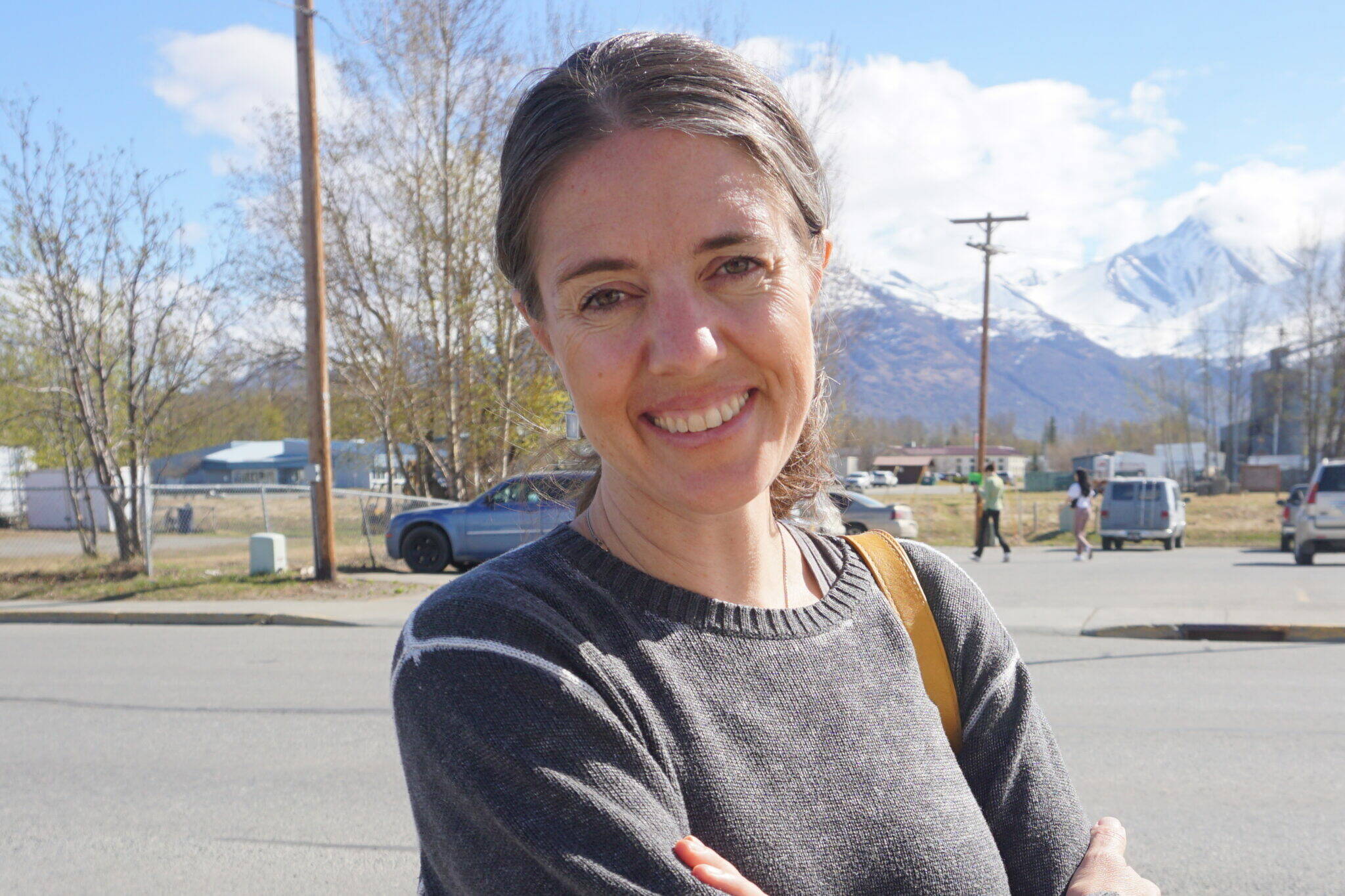Dr. Anne Zink, who gained prominence during Alaska’s response to the COVID-19 pandemic, is leaving her position as the state’s chief medical officer.
Zink plans to leave the position in April after serving since July 2019. She told state officials and colleagues of the decision in January. While the state hadn’t announced the change, U.S. Sen. Lisa Murkowski, R-Alaska, mentioned it during her visit to the Alaska Capitol on Thursday.
In an interview, Zink said she believed that “the chief medical officer ideally would always transition between governor elections, not during governor elections, and to try to keep this position as apolitical as possible.”
Zink said she planned to continue to work on how health systems best serve patients. While she said didn’t have any specific future work to announce, she does plan to stay in Alaska.
Zink was a visible public presence in the early months of the pandemic, providing medical information and guidance during frequent news conferences held by Gov. Mike Dunleavy and state health officials.
Dunleavy praised Zink in a emailed statement:
“As Alaska’s chief medical officer during the pandemic, Doctor Zink provided more than medical guidance,” the governor said. “Her calm, reassuring presence made many thousands of Alaskans more confident with how to respond to the virus and stay safe during those uncertain times.”
Along with Dunleavy, Zink advised Alaskans to take steps to practice social distancing in response to COVID, while also encouraging them to enjoy the outdoors. She also frequently delivered grim news about the numbers of Alaskans who died or were hospitalized from the disease, often emphasizing the tragic loss of each individual life.
Zink said the advice she would offer someone considering a similar opportunity to work in public service at any level is, “do it.”
“The opportunity to work with the professionals with Public Health, as well as the Department of Health and other departments has been astonishing — I learned something new from them every single day,” from how viruses are named to how the Department of Corrections lowers the cost of patient medication, Zink said.
Zink acknowledged the connection many Alaskans felt with her.
“It’s still always surprising to me when people share, you know, ‘I went skiing every single day when you were on the news report,’ or ‘I had a kid and was in the NICU and would watch you and you all helped me get through what was a really scary time,’” she said.
“There’s this very asynchronous understanding of communication, when you’re on TV and other people are listening: I did not know that they were in the NICU with their child, or what that was like for them, but they knew what I was saying, so that’s been a unique and new experience for me,” she said. “And, again, a real honor. It just took a little bit to get used to.”
Zink served last year as the president of the Association of State and Territorial Health Officials, which represents public health agencies.
She said chief medical officers typically stay in their roles for less than two years, so her tenure of nearly five years is unusual.
Zink said as she has talked with health leaders in other states, she’s come to understand that Alaska’s approach to public health is particularly community-focused, with tribal and municipal leaders at the forefront of public health communications during the pandemic.
Zink worked full-time as an emergency department doctor at the Mat-Su Regional Medical Center before taking the state position, and continued to work there part-time after joining the state.
She said when she was on TV frequently, patients would recognize her. Now that the public attention has faded: “People are like, ‘Do our kids go to school together? Do I know you from somewhere?’ And now I am, like, kind of a slightly distant memory to a lot of people. Which is great. I do not need to be in the public eye.”
Zink drew praise for her role in reassuring the public at a time of uncertainty, but increasingly drew scrutiny from those who opposed much of the COVID-19 response by authorities.
When asked in 2021 about the misinformation and disinformation spread about the pandemic on social media, Zink said public health officials could be better at telling stories about what they see in their work.
“I think as scientists, as health care professionals and as public health professionals, we need to do a better job about communicating the science in a way that people can understand, that they can feel comfortable asking questions,” Zink told Alaska Public Media.
In 2022, as the crisis eased, Zink talked about the importance of state efforts to foster a broader conception of health, including wellness and safety.
“We really need to not just provide care for the sick, but we need to find ways to be healthy and well,” she said in an interview with the Alaska Beacon.
Zink said that after she leaves her position in April, she plans to take some time off.
“My immediate plan is that I’m going to be taking a little bit of time this summer before my oldest daughter goes to college, and while my other daughter has some time off over the summer,” she said. “So I’m really excited to spend some time with them. My family has been incredibly gracious and patient during what has been an amazing opportunity but a lot of time and work.”
• Andrew Kitchenman has covered state government in Alaska since 2016, serving as the Capitol reporter for Alaska Public Media and KTOO before joining the Alaska Beacon. Before this, he covered state and local governments on the East Coast – primarily in New Jersey – for more than 15 years. This article originally appeared online at alaskabeacon.com. Alaska Beacon, an affiliate of States Newsroom, is an independent, nonpartisan news organization focused on connecting Alaskans to their state government.

